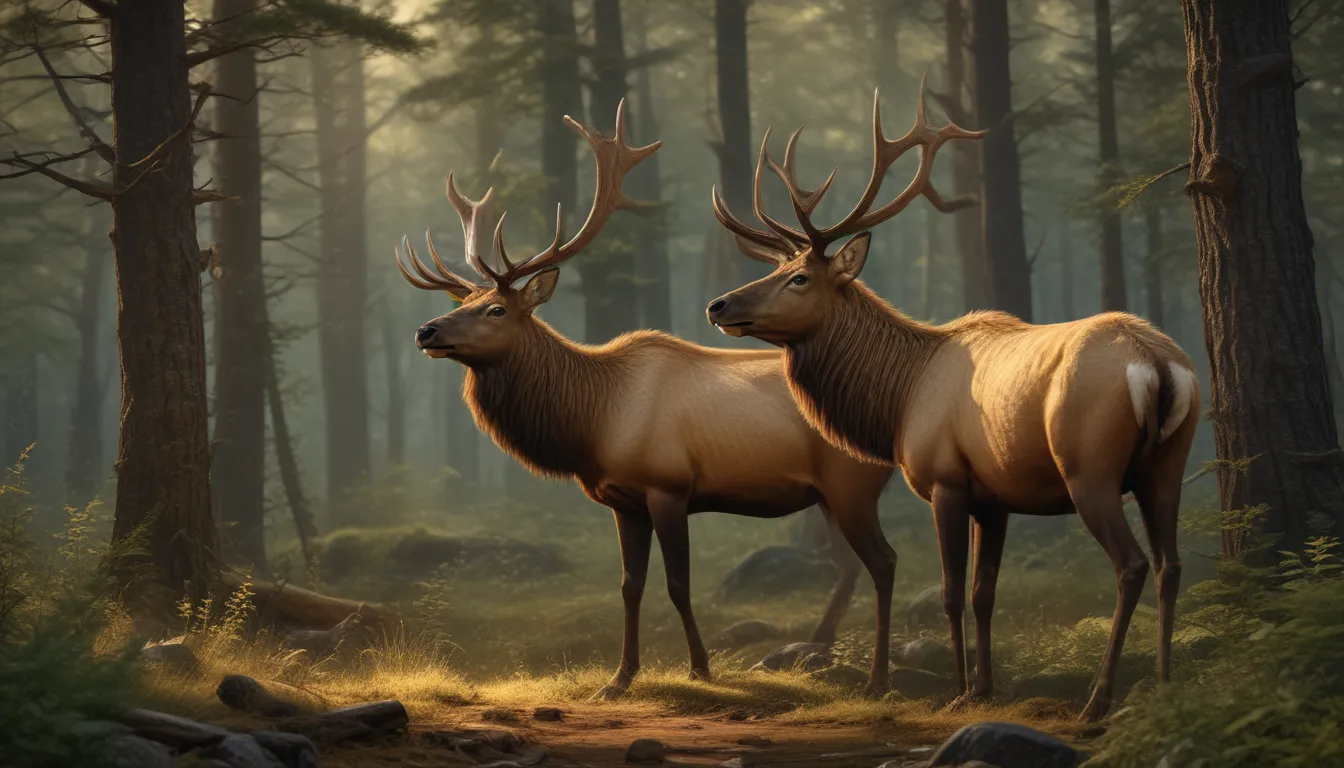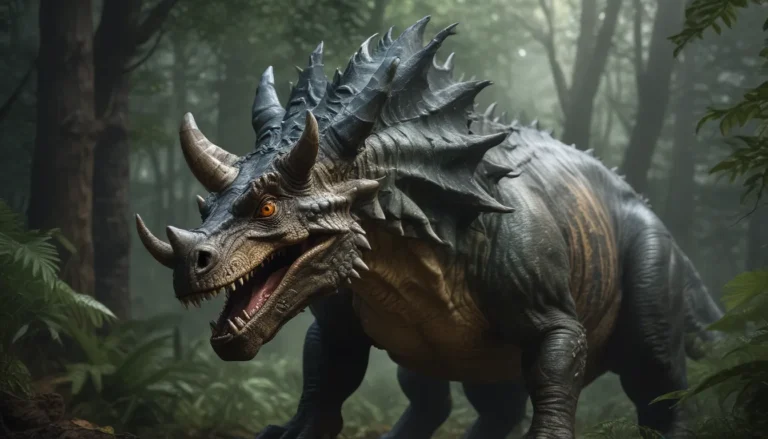The pictures we use in our articles might not show exactly what the words say. We choose these pictures to make you interested in reading more. The pictures work together with the words but don’t take their place. The words still tell you the important facts.
Have you ever been mesmerized by the majestic presence of elk, also known as wapiti, as they roam the forests and mountains of North America? These incredible creatures with their striking appearance and impressive antlers have captivated the imaginations of nature lovers and wildlife enthusiasts for centuries. Not only are elk beautiful to behold, but they also play a vital role in shaping and maintaining the biodiversity of their habitats. Join us as we delve into 17 intriguing facts about elk that will leave you with a greater understanding and appreciation of these iconic animals.
The Majestic Elk: A Grand Species of Deer
One of the largest species of deer, elk can reach a height of up to 5 feet at the shoulder and weigh over 700 pounds. Their impressive antlers, spanning up to 4 feet, make them a true symbol of strength and power in the animal kingdom.
The Bugling Calls of Elk
During the mating season, male elk produce a distinctive bugling sound that can carry for miles. This haunting call is used to establish dominance and attract females, adding to the majestic allure of these creatures.
The Remarkable Sense of Smell of Elk
Elk possess a highly developed sense of smell, which they use to detect danger and locate food sources. Their keen sense of smell helps them navigate their surroundings and stay alert in the wilderness.
The Surprisingly Agile Swimmers
Despite their large size, elk are excellent swimmers and have been known to cross rivers and lakes when necessary, showcasing their adaptability and strength.
Herbivores of the Wilderness
Feeding on grasses, leaves, bark, and twigs, elk are herbivores with a specialized stomach to digest tough plant material. Their role as herbivores contributes to the overall health of their ecosystems.
Strong Social Structure of Elk
Elk form herds led by a dominant male, known as a bull, who gathers females and their offspring to create a strong social bond within the herd, demonstrating the dynamics of their structured social interactions.
The Intriguing Mating Season: The Rut
During the rut in the fall, bulls compete for dominance and the opportunity to mate with females, displaying their magnificent antlers and engaging in intricate mating rituals.
The Gestation Period and Birth of Elk
Female elk have a gestation period of around 8 months and give birth to a single calf in the spring or early summer. The calves, born with spots on their fur, stay with their mothers until they are ready to fend for themselves.
Versatile Habitats of Elk
Adaptable animals, elk are found in diverse environments such as forests, meadows, mountains, and deserts, showcasing their ability to thrive in various climates and landscapes.
Wallowing Behavior of Elk
Elk engage in wallowing, rolling in mud or soil to regulate their body temperature, minimize insect bites, and mark their territories with their scent, showcasing their unique behaviors for survival.
The Life Span of Elk
Elk typically live for around 15 to 20 years, with longer lifespans in protected environments where they face fewer threats from predators and human disturbances.
Running Abilities of Elk
Impressively, elk can reach speeds of up to 40 miles per hour when startled or pursued, utilizing their running abilities to escape potential threats in their natural habitats.
Annual Shedding and Regrowth of Antlers
Male elk shed and regrow their antlers annually, with each new set growing larger and more complex over time, adding to the impressive display of these iconic creatures.
The Vital Role of Elk as Herbivores
By feeding on vegetation, elk help manage plant populations and contribute to the overall health and biodiversity of their ecosystems, highlighting their importance in maintaining ecological balance.
Adaptability and Survival Skills of Elk
Highly adaptable, elk can adjust their behavior, feeding habits, movement patterns, and social interactions based on changes in their environment, showcasing their intelligence and resilience.
The Keen Sense of Hearing of Elk
With large ears designed to pick up faint sounds, elk have a keen sense of hearing that allows them to detect predators or other elk in the vicinity, aiding in their survival in the wild.
Cultural and Artistic Significance of Elk
Throughout history, elk have made appearances in various cultural and artistic works, capturing the imagination of people through Native American folklore, paintings, literature, and films, symbolizing the wild and untamed.
Conclusion: Embracing the Wonder of Elk
Elk, with their imposing stature and captivating presence, continue to intrigue and inspire us with their fascinating characteristics and behaviors. As we explore the world of elk through these 17 intriguing facts, we deepen our understanding of the natural world and the importance of conservation efforts to protect these iconic creatures for future generations to appreciate.
FAQs: Common Questions About Elk
Q: What is the average lifespan of an elk?
A: In the wild, elk typically live for around 10 to 13 years, with some living up to 20 years.
Q: How fast can an elk run?
A: Elk can reach speeds of up to 45 miles per hour when running at full tilt.
Q: Do elk migrate?
A: Yes, elk undertake seasonal migrations in search of food and suitable breeding grounds.
Q: How big are elk antlers?
A: Male elk, or bulls, have antlers that can reach up to 4 feet long and weigh up to 40 pounds.
Q: Are elk aggressive?
A: While generally peaceful, elk can display aggression during the mating season or when feeling threatened, showcasing their protective instincts.
Elk enthusiasts can delve deeper into the captivating world of these majestic creatures. Whether exploring the Edmonton Elks football team, admiring the natural beauty of Elk Grove, California, or discovering the nutritional benefits of ground elk meat, there is always something new to learn about elk and their fascinating connections to our world.
As we journey through the world of elk, let's embrace the wonder and beauty of these iconic creatures, appreciating their role in shaping and maintaining the natural landscapes they inhabit. Through education and conservation efforts, we can ensure that elk continue to roam the forests and mountains, captivating our hearts and inspiring future generations with their majestic presence.






